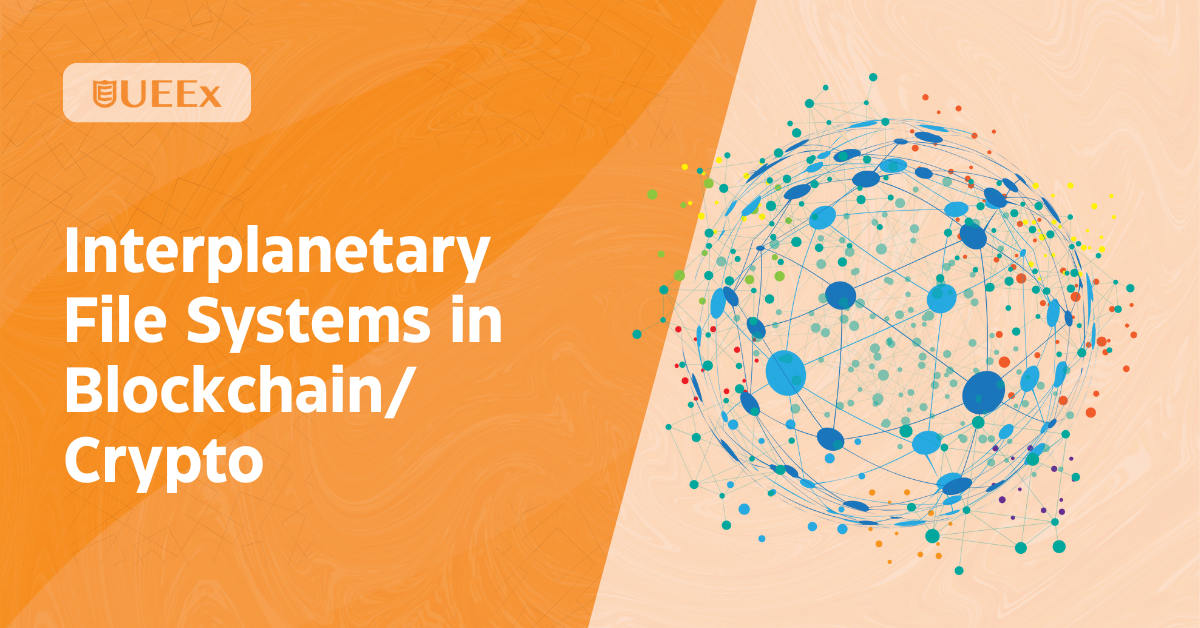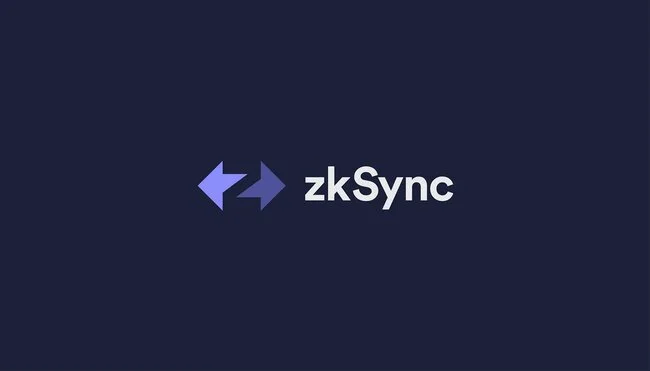Before the introduction of InterPlanetary File Systems (IPFS) in 2015, data on the internet relied heavily on centralized servers, making it vulnerable to censorship, single points of failure, and high storage costs.
According to Statista, as of 2023, global data creation reached 120 zettabytes, most of which flowed through centralized platforms like Google, AWS, and Microsoft Azure. This dependency raises concerns around data control, access limitations, and long-term availability, especially for blockchain and crypto-based systems relying on transparency and decentralization.
Read Also: Merkle Trees: All You Need to Know
Now, with the rise of Web3 applications, NFTs, and decentralized apps (dApps), IPFS offers a more secure, distributed alternative to traditional web infrastructure.
Its content-addressable model aligns naturally with blockchain’s immutable structure, making IPFS in crypto an increasingly essential component for scalable, censorship-resistant platforms.
So what then is InterPlanetary File Systems in blockchain/crypto? This blog breaks down what IPFS really is, how it works, and why it’s becoming a critical backbone for decentralized technologies.
Key Takeaways
- IPFS provides decentralized, content-addressed file storage that enhances data availability, integrity, and resilience for blockchain applications.
- Unlike HTTP’s location-based model, IPFS enables faster, more secure content delivery through peer-to-peer file sharing.
- Blockchain projects use IPFS to store NFTs, smart contract data, and dApp assets without relying on centralized servers.
- Integrating IPFS helps overcome blockchain scalability limits while improving censorship resistance and long-term file access.
- As Web3 adoption increases, IPFS is becoming essential infrastructure for decentralized apps, digital identity, and trustless content sharing.
What is the Interplanetary File System (IPFS)?

The InterPlanetary File System (IPFS) is a peer-to-peer (P2P) distributed file storage protocol designed to make the web faster, safer, and more open.
Unlike traditional web protocols like HTTP that fetch files from specific servers, IPFS retrieves data based on content addressing—meaning each file is identified by a unique cryptographic hash rather than its location.
This content-addressing system ensures that once a file is added to the IPFS network, it cannot be altered without changing its hash. This makes IPFS tamper-resistant and ideal for applications requiring data integrity, such as blockchain-based platforms and decentralized applications (dApps).
IPFS works by allowing users to host and access content across a decentralized network of nodes. When you upload a file to IPFS, it’s broken into smaller blocks, cryptographically hashed, and distributed across multiple nodes.
Anyone requesting the file can retrieve it from the closest or fastest available source, improving speed and reliability, especially in regions with limited server infrastructure.
This decentralized design not only reduces reliance on central authorities but also enhances data availability, making IPFS a key infrastructure layer for projects in Web3, NFTs, and decentralized identity systems.
How Does Interplanetary File Systems Work

Let’s break down how IPFS actually works under the hood.
Content-Based Addressing Instead of Location-Based
In the traditional web (HTTP), files are accessed by their location, typically a domain name pointing to a centralized server. For example, visiting “http://example.com/image.jpg” takes you to a specific server to retrieve that file.
In IPFS, files are accessed by what they are, not where they are. This is called content addressing. When a file is added to IPFS:
- It is broken into smaller chunks.
- Each chunk is cryptographically hashed.
- The entire file receives a unique Content Identifier (CID) based on its hash.
So instead of accessing a file by URL, you access it via its CID. If the content changes—even slightly—the hash and CID also change. This guarantees data integrity.
Read Also: What Is Blockchain Network Congestion?
Distributed Hash Table (DHT) for File Discovery
Once a file is added and assigned a CID, the next challenge is finding it on the IPFS network.
IPFS solves this using a Distributed Hash Table (DHT)—a system where each node stores information about some files and knows which peers are hosting other files. Think of it as a decentralized index or lookup system.
When you request a file using its CID:
- Your IPFS node asks the DHT, “Who has this CID?”
- The DHT returns the addresses (peer IDs) of nodes hosting that content.
- Your node then connects to those peers and downloads the file.
File Chunking and Merkle DAGs
Large files in IPFS are not stored as single blocks. Instead, they are chunked into smaller blocks (typically 256 KB). These chunks are then organized into a Merkle Directed Acyclic Graph (Merkle DAG).
A Merkle DAG:
- Links each chunk with its hash.
- Ensures tamper-proof file structure.
- Makes it possible to verify data without downloading the entire file.
This system supports deduplication—if two files share chunks (like two PDFs with the same introduction), those chunks are stored only once.
Peer-to-Peer Content Delivery
Since IPFS is peer-to-peer, there are no centralized servers. Every participant (node) in the network can:
- Host (serve) content.
- Request and download content from others.
When you request a file, the data is fetched from multiple peers simultaneously, much like how BitTorrent works. This makes IPFS resilient, faster in many cases, and able to scale naturally as more users join.
Pinning and Persistence
IPFS doesn’t automatically store files forever. By default, nodes may garbage-collect files they no longer need.
To ensure long-term storage of a file, you need to pin it. Pinning tells your IPFS node to keep the file permanently.
There are also services like Filecoin, Pinata, and web3.storage that offer paid or incentivized solutions for pinning files across multiple nodes, providing decentralized persistence.
Versioning and Mutability with IPNS
Since IPFS is content-addressed, content is immutable—a CID always points to the same data.
But what if you want a link that always points to the latest version of a file?
That’s where the InterPlanetary Naming System (IPNS) comes in. IPNS uses public-private key pairs to assign human-readable names (or addresses) that can point to updated CIDs over time.
For example:
- Your IPNS address might point to CID v1 today.
- You can update it to CID v2 tomorrow.
This enables mutable references in an otherwise immutable system.
Cryptographic Security and Trust
Every piece of content in IPFS is identified by its cryptographic hash. This ensures:
- Tamper-proof content: If a file is altered, its CID changes.
- Built-in data validation: Downloaded data is automatically verified using its hash.
- Trustless architecture: You don’t have to trust the person hosting the file; the hash guarantees its authenticity.
How IPFS Integrates with Blockchain Technology
The InterPlanetary File System (IPFS) and blockchain technology serve different but highly complementary purposes in the decentralized ecosystem. While blockchain ensures secure, tamper-proof, and transparent ledgers for financial transactions or data verification, IPFS provides scalable and efficient decentralized storage.
Due to the storage limitations and high costs associated with on-chain data, blockchains benefit significantly from off-chain solutions like IPFS to handle non-transactional data, especially large files.
This seamless interaction between blockchain and IPFS is what powers some of the most essential infrastructure in Web3 today.
These are:
Common Use Cases of IPFS in Blockchain

Storing Smart Contract Data
Smart contracts are typically stored on-chain, but they are limited in capacity and not ideal for handling large datasets or files. IPFS is often used to store supplemental data that smart contracts reference using CIDs (Content Identifiers).
Examples include:
- Game states in blockchain games
- DAO governance documents
- Detailed terms and descriptions of DeFi contracts
This off-chain storage reduces blockchain bloat and gas fees while keeping the data accessible and verifiable.
NFT Metadata and Media Files
Non-Fungible Tokens (NFTs) often represent ownership of digital assets like images, videos, audio, or 3D models. However, storing these rich media files directly on-chain is inefficient and cost-prohibitive.
IPFS solves this by storing:
- NFT images and media assets
- Metadata files (e.g., title, creator, traits, rarity)
Each NFT smart contract then points to the corresponding IPFS CID, ensuring the content is immutable and verifiable. This also guards against issues like broken image links or metadata manipulation.
Hosting Decentralized Application (dApp) Frontends
Web3 applications often use IPFS to host their frontend code and user interfaces. This makes dApps fully decentralized—not just in backend logic (smart contracts) but also in their visual layer.
IPFS-hosted dApps:
- Can’t be censored or taken down by centralized platforms
- Remain available as long as someone pins the content
- Are accessible via IPFS gateways or IPNS names
Projects often integrate IPFS with domain services like ENS (Ethereum Name Service) or Unstoppable Domains for easier access.
IPFS in Ethereum and Other Major Blockchains
Ethereum
Ethereum is one of the most prominent adopters of IPFS. Developers frequently use IPFS to:
- Store NFT metadata (e.g., in ERC-721 and ERC-1155 tokens)
- Reference off-chain documents from smart contracts
- Host decentralized frontends for DeFi protocols
Filecoin, which incentivizes persistent IPFS storage, also shares strong technical and philosophical ties with Ethereum and the broader Web3 ecosystem.
Solana
Solana integrates IPFS (often through Arweave or Pinata) for storing NFT data. With Solana’s ultra-fast blockchain, IPFS complements it by offloading heavy file storage to a decentralized network without compromising accessibility or trust.
Polygon
Polygon supports full-stack dApp development and frequently uses IPFS for:
- NFT storage
- DAO tools
- Layer-2 projects building lightweight frontends
Projects on Polygon often integrate IPFS and Filecoin to keep assets lightweight and decentralized.
Tezos, Avalanche, Binance Smart Chain (BSC)
These chains also utilize IPFS to host:
- Project documentation
- Frontend UIs
- NFT assets
IPFS serves as a shared off-chain infrastructure layer across multiple blockchains, promoting interoperability and decentralization.
Examples of Crypto Projects Using IPFS
OpenSea

The largest NFT marketplace uses IPFS to host metadata and media files for NFTs. It ensures that even if OpenSea’s servers go down, the assets linked via IPFS remain accessible.
Uniswap

Uniswap’s frontend is hosted on IPFS, which allows users to interact with the decentralized exchange via gateways even if their primary domain is taken offline or blocked.
Filecoin
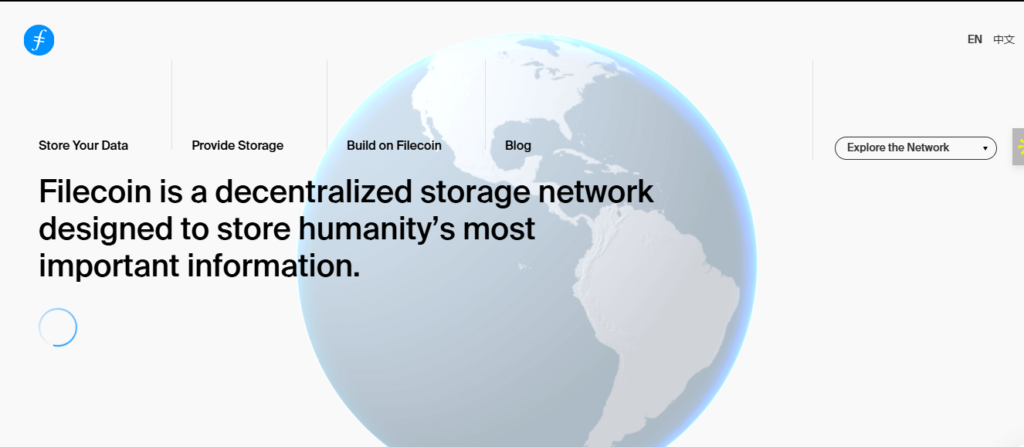
While Filecoin is a separate protocol, it’s built on top of IPFS and extends its capabilities by offering a decentralized economic model for persistent file storage. Projects store large datasets using Filecoin and access them through IPFS links.
Audius

A decentralized music streaming platform, Audius uses IPFS to store audio files and metadata while using blockchain to manage ownership and royalties.
Aragon
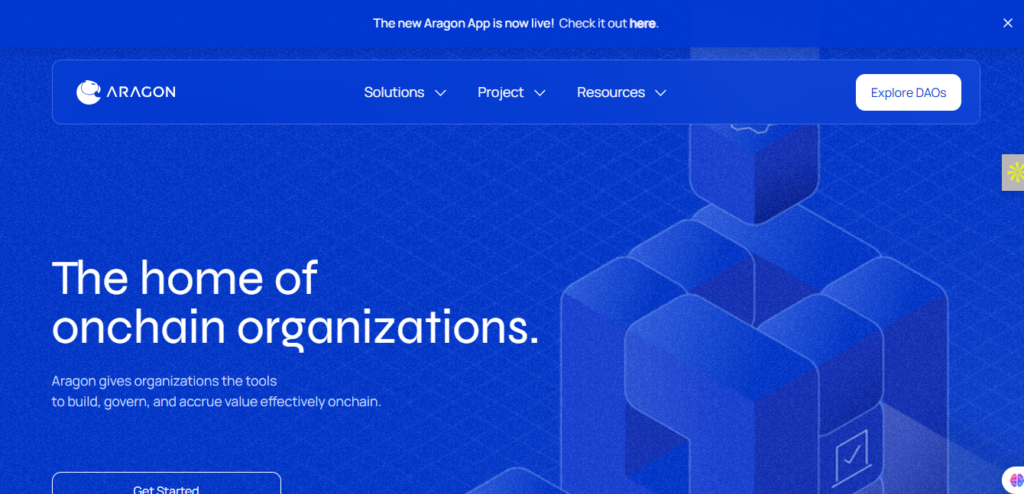
A platform for building DAOs, Aragon uses IPFS to store governance proposals, voting records, and documentation off-chain while maintaining verifiable links on-chain.
Why IPFS is Important in Blockchain and Crypto
As blockchain and cryptocurrency ecosystems expand, the need for scalable, secure, and censorship-resistant data storage becomes more urgent.
Blockchains are excellent for storing transaction records and enforcing trustless logic, but they fall short when it comes to handling large files or complex datasets. That’s where the InterPlanetary File System (IPFS) becomes critically important.
By providing decentralized file storage and retrieval, IPFS addresses several core challenges in Web3 infrastructure, playing a vital role in making crypto more functional, transparent, and resilient.
Decentralized Data Storage and Its Benefits
IPFS removes the dependency on centralized servers, cloud providers, or data silos by enabling peer-to-peer storage of digital content. In this system, users across the globe host and share files, eliminating single points of failure and making data far more accessible.
Key benefits are:
- Redundancy: Content is distributed across multiple nodes, reducing the risk of data loss.
- Availability: Files remain accessible as long as at least one node pins or caches them.
- Verifiability: Each file is content-addressed with a unique cryptographic hash (CID), ensuring it hasn’t been altered.
- Cost-efficiency: Reduces the burden of storing large files on-chain, saving resources and gas fees.
This decentralization aligns perfectly with the core philosophy of blockchain: trustless systems without central authorities.
Overcoming Blockchain Scalability and Storage Limitations
Blockchains are not designed for handling heavy data. Storing images, videos, PDFs, or app frontends directly on-chain is both inefficient and expensive. For example, storing just 1MB of data on Ethereum can cost hundreds of dollars in gas fees due to its limited block space.
This is how IPFS solves this:
- Stores large files off-chain while maintaining a tamper-proof reference (CID) on-chain.
- Enables developers to build lightweight smart contracts that reference external data via IPFS.
- Prevents blockchain bloat, which can slow down networks and increase synchronization times.
By offloading storage, IPFS allows blockchain systems to scale more sustainably, while still retaining data integrity and transparency.
Enhancing Security and Censorship Resistance
In centralized systems, content can be removed, edited, or hidden by hosting providers, governments, or corporations. In contrast, IPFS is inherently resistant to censorship because no single entity controls the network.
Security advantages are:
- Immutable content: Once a file is added and pinned on IPFS, its CID cannot be changed without altering the content itself.
- Tamper-proof verification: Data is validated through cryptographic hashes, making it impossible to fake or forge.
- Resistance to takedown: Since files are distributed and hosted by peers worldwide, it’s nearly impossible to censor or block access.
This makes IPFS ideal for hosting:
- NFT media and metadata
- dApp frontends
- Decentralized journalism
- DAO documentation
- Scientific research and open data
For crypto projects aiming to preserve freedom of information and combat centralized control, IPFS is not just a tool—it’s a necessity.
What Are the Downsides of IPFS?
Below are the key downsides of using IPFS:
No Built-in File Permanence
IPFS is content-addressed, meaning once a file is added to the network, it gets a unique hash (CID). However, this doesn’t guarantee that the file will remain available forever.
This is because:
- Files on IPFS can disappear if no node is actively “pinning” or hosting them.
- There is no incentive mechanism in core IPFS to retain data long-term.
- Content garbage collection on nodes can remove unpinned files over time.
To overcome this, projects often use complementary services like Filecoin, Pinata, or web3.storage for persistent storage, adding complexity and cost.
Slower Retrieval Times Compared to HTTP
IPFS is peer-to-peer, so file retrieval depends on:
- The number of peers hosting the content
- Their geographic location
- Network reliability
This can lead to inconsistent or slower load times compared to traditional Content Delivery Networks (CDNs) that are optimized for speed and latency. If a file is not widely distributed across nodes, the delay can be noticeable.
Difficult User Onboarding and Tooling Gaps
For everyday users unfamiliar with decentralized infrastructure:
- Running an IPFS node can be technically complex
- Understanding CID links, gateways, and pinning can create a steep learning curve
- There’s a lack of mainstream-friendly UI tools compared to traditional cloud services
This usability gap limits wider adoption, particularly among non-developers and casual internet users.
No Native Encryption or Access Control
By default, IPFS makes all stored content public once added to the network. There is:
- No built-in encryption
- No native access permissions or private sharing features
This is a concern for apps handling sensitive or personal data. Developers must manually add encryption layers or use third-party protocols to manage privacy and access control.
Search and Indexing Challenges
Unlike the centralized web where search engines like Google index and rank content, IPFS lacks a native, efficient content discovery system.
As a result:
- You must know the exact CID to access a file
- Browsing or searching for content on IPFS is not intuitive
- This makes the user experience fragmented, especially for casual use cases
Efforts are being made to improve discoverability (e.g., through IPNS or ENS), but it’s still an area of weakness.
Dependence on Gateways for Web Access
Most users access IPFS content via public gateways (e.g., https://ipfs.io/ipfs/). However, these gateways:
- Act as centralized intermediaries
- Can be rate-limited, censored, or taken down
- Reintroduce a form of central point of failure
To avoid this, users need to run local nodes or use decentralized browsers, which again circles back to the complexity issue.
The Future of IPFS in Blockchain and Web3
As blockchain and Web3 technologies mature, the demand for scalable, decentralized storage solutions is becoming increasingly urgent. The InterPlanetary File System (IPFS), with its peer-to-peer architecture and content-addressable storage, has positioned itself as a foundational protocol for the decentralized internet.
But what does the future hold for IPFS in the context of blockchain and Web3? Below, we explore the key trends, integrations, and innovations that are shaping the trajectory of IPFS in the years ahead.
IPFS as the Standard for Decentralized File Storage
Traditional blockchains like Ethereum, Solana, and Polygon are not designed to handle large or static files such as images, videos, or app frontends. IPFS offers a natural solution, and it’s increasingly being adopted as the default off-chain storage layer.
In the future, IPFS will likely:
- Be bundled into more Web3 development frameworks by default (e.g., Truffle, Hardhat, Moralis)
- Power decentralized identity systems, DAO records, and Web3 gaming assets
- Serve as the storage layer for metaverse assets, digital collectibles, and persistent web applications
This movement will solidify IPFS as essential infrastructure in the blockchain stack, just like Ethereum is for smart contracts.
Tighter Integration with Incentive Layers Like Filecoin
One of the most common criticisms of IPFS today is its lack of built-in file persistence. This challenge is already being addressed by projects like Filecoin, which is designed to add economic incentives to IPFS storage.
Moving forward:
- More dApps will combine IPFS + Filecoin to ensure long-term data availability
- Storage protocols may offer auto-pinning, smart contract-linked payment models, and decentralized backups
- Filecoin’s Retrieval and Storage Markets will make IPFS content easier to access and monetize
This integration will create a self-sustaining ecosystem for decentralized storage that’s scalable, reliable, and economically viable.
Growing Role in Decentralized Application (dApp) Hosting
As Web3 expands, so does the need for fully decentralized application infrastructure. Right now, many dApps rely on centralized frontends hosted on platforms like AWS or Netlify. This creates a potential single point of failure.
With IPFS:
- dApp UIs can be hosted on distributed networks
- Domains can be resolved using ENS or IPNS
- Updates and version control become cryptographically transparent
In the future, we’ll likely see more dApp frontends deployed via IPFS by default, with easy plug-and-play integrations for blockchain developers.
Enhanced Privacy and Encryption Layers
Currently, IPFS content is public by default. But Web3 projects are already working on encryption and access control layers that make selective sharing and private content hosting possible over IPFS.
Expected developments include:
- Native encryption standards for IPFS content
- Zero-knowledge proof integrations for secure access
- Token-gated content access linked to on-chain identities or NFTs
These advancements will make IPFS suitable for more enterprise-grade, healthcare, and financial use cases that demand confidentiality.
IPFS in Multi-Chain and Interoperable Web3 Ecosystems
As blockchain technology moves towards multi-chain interoperability, IPFS offers a shared, chain-agnostic storage protocol that can unify data access across different networks.
In the coming years:
- IPFS will be used as a cross-chain content delivery system
- Data stored once on IPFS can be accessed by Ethereum, Polkadot, Cosmos, Avalanche, and others
- Unified storage layers will simplify cross-platform dApp development and asset management
This makes IPFS one of the few technologies capable of serving as infrastructure across all major blockchain ecosystems.
Mainstream Awareness and Browser-Level Integration
For mass adoption, end-users must be able to interact with IPFS seamlessly. That means eliminating the need for browser extensions, gateways, or node installations.
Already, browsers like Brave have integrated native IPFS support, and others are likely to follow.
In the future:
- IPFS URIs could be natively resolved in Chrome, Firefox, and mobile browsers
- Decentralized websites and apps will be browsable without centralized gateways
- IPFS may become as familiar as “https://” for Web3 users
This will help bridge the gap between Web2 and Web3, accelerating mainstream adoption of decentralized content delivery.
IPFS vs. HTTP: What’s the Difference?
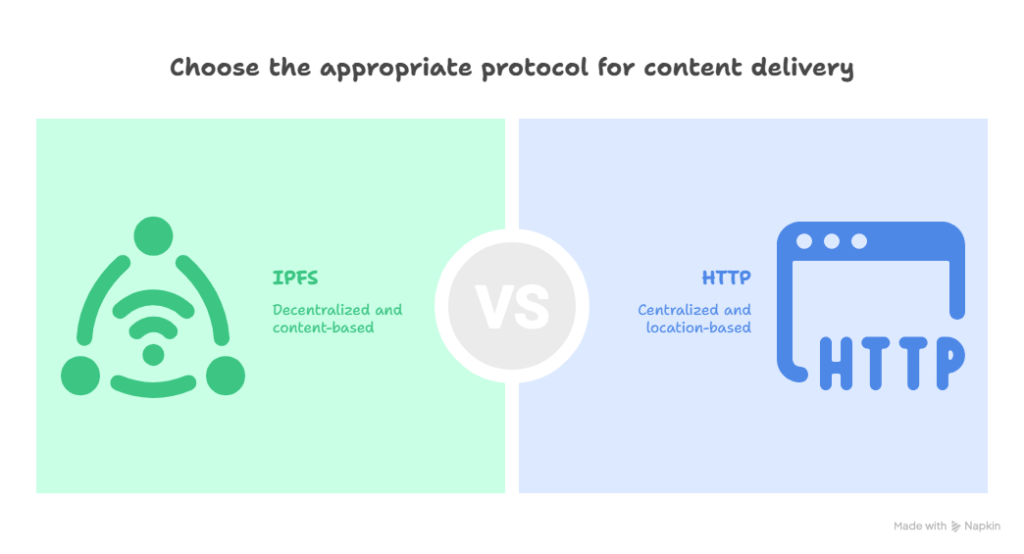
The internet as we know it today is largely powered by HTTP (HyperText Transfer Protocol)—a centralized method of requesting and delivering data from servers. But with the growth of Web3 and decentralized technologies, the InterPlanetary File System (IPFS) is emerging as a powerful alternative.
So, what exactly sets IPFS apart from HTTP? Let’s explore how these protocols work, how they differ, and why IPFS is becoming increasingly important in the blockchain and crypto space.
| Feature | HTTP | IPFS |
| Architecture | Centralized | Decentralized (P2P) |
| Content Addressing | Location-based (URLs) | Content-based (CIDs) |
| Data Persistence | Host-dependent | Needs pinning/incentives |
| Censorship Resistance | Low | High |
| Data Verification | Limited | Strong (hash-based) |
| Speed | Fast with CDN | Variable (peer availability) |
| Ease of Use | Very user-friendly | Needs better tooling |
Centralized vs. Decentralized Architecture
HTTP: Location-Based and Centralized
HTTP operates on a location-based addressing system, where files are retrieved from specific servers using URLs like “https://example.com/file.jpg.” If that server goes offline or is censored, the content becomes inaccessible.
- Data lives on central servers
- Users fetch files from a single source
- Vulnerable to downtime, hacks, and censorship
IPFS: Content-Based and Decentralized
In contrast, IPFS uses content-based addressing. Every file is given a unique cryptographic hash (CID). When you request a file, the network looks for any node that has that specific content, regardless of its physical location.
- Files are stored across a peer-to-peer network
- Retrieved from multiple nodes that host a copy
- More resilient and censorship-resistant
How Files Are Located and Delivered
HTTP Workflow:
- You request a URL like https://site.com/file.png
- The browser contacts the web server hosting that file
- The server responds with the data
If the server is down or the file is removed, the content is no longer available.
IPFS Workflow:
- You request a CID, like QmXyz…
- IPFS nodes search the network for that exact hash
- The file is delivered from one or more nodes hosting it
Even if the original uploader disappears, others can serve the file, ensuring persistent availability.
Content Integrity and Verification
HTTP:
- No built-in mechanism to verify content.
- A server could deliver a modified file without users noticing.
- Security depends on SSL/TLS certificates and server trust.
IPFS:
- Content is immutable—its hash will change if the file changes.
- Users can verify integrity immediately based on the CID.
- Eliminates trust in third parties for content verification.
This makes IPFS particularly attractive for use cases like NFT metadata, where tamper-proof content is essential.
Scalability and Efficiency
HTTP:
- Can become expensive and inefficient at scale.
- Popular content requires replication via CDNs (centralized caches).
- Server overloads can lead to slowdowns or crashes.
IPFS:
- Popular files are automatically distributed across nodes.
- The more users access a file, the faster and more available it becomes.
- Efficient use of bandwidth and storage through deduplication and caching.
IPFS offers a scalable solution for decentralized apps (dApps), especially those handling media, datasets, or documents.
Censorship Resistance
HTTP:
- Content can be removed or blocked by authorities or ISPs.
- Domains and servers can be taken down.
- Limits access to information in restrictive regions.
IPFS:
- No central authority can unilaterally remove content.
- Data remains available as long as one node hosts it.
- Ideal for free speech, open data, and uncensorable media.
Final Thoughts
IPFS is shaping the future of blockchain and Web3 by enabling decentralized, secure, and efficient content storage. From NFTs to dApps, its integration with major blockchains like Ethereum is unlocking practical use cases.
While IPFS has limitations, such as a lack of permanence and slow retrieval, it solves critical problems that HTTP cannot. As more projects prioritize censorship resistance and data integrity, IPFS will continue to play a key role in building a more resilient and decentralized internet for blockchain-based ecosystems.
